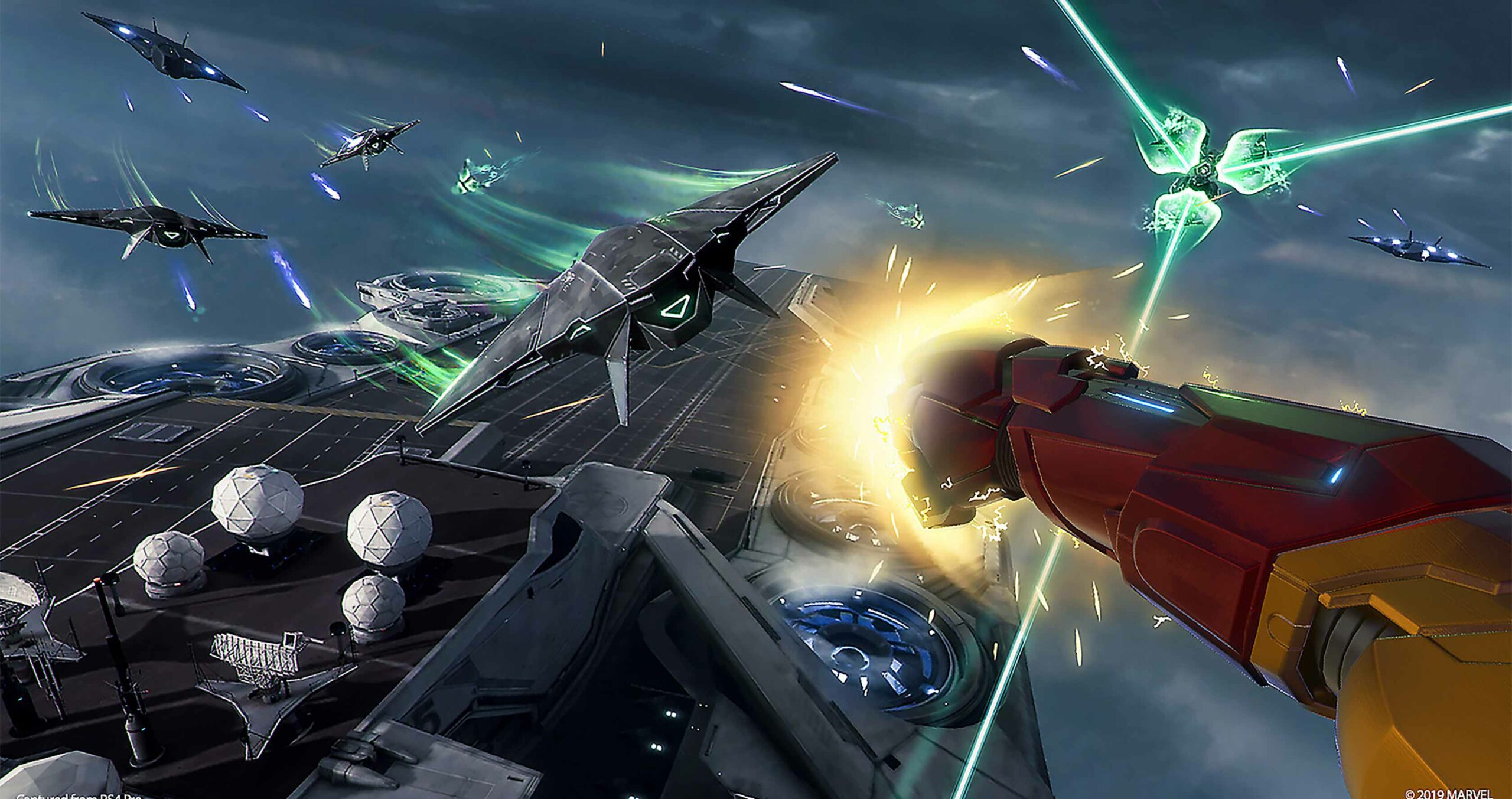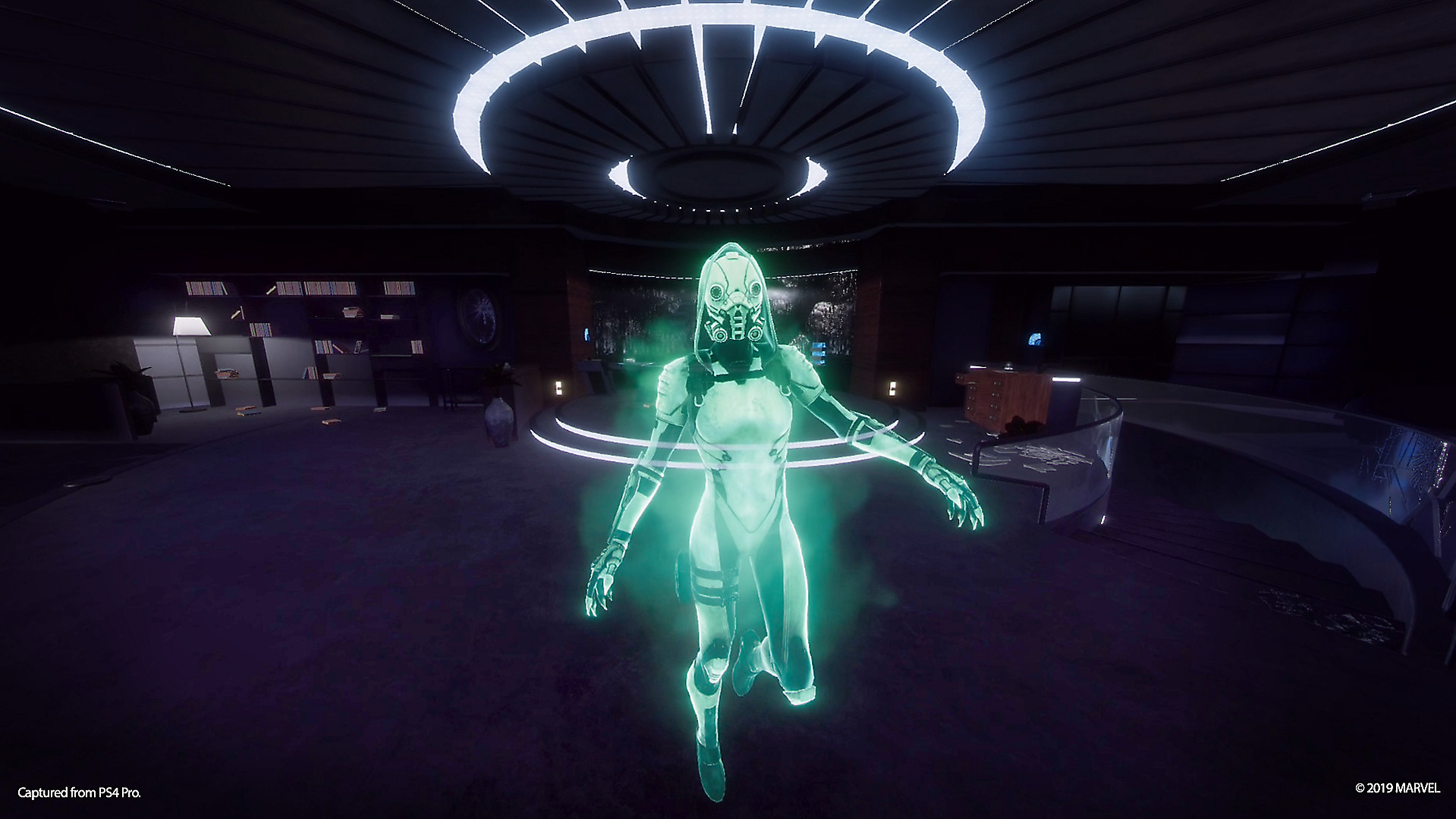
Iron Man is a character that has been deeply engrained in pop-culture over the past several years, having led the massive Marvel Cinematic Universe that has dominated the entertainment industry. Most recently, he was the heart and soul of 2019’s Avengers: Endgame, which went onto become the highest-grossing film of all time.
However, the Armored Avenger has never had a top-notch video game worthy of that legacy. To help fix that, Seattle-based indie developer Camouflaj has teamed up with Marvel and Sony to create Marvel’s Iron Man VR, a fully-featured PlayStation VR title that aims to immerse you in the iconic armour in ways that a non-VR game never could.
Now, after three years of work, the team has confirmed that the game has gone gold — a gaming industry term signifying that development has been fully completed.
After years of hard work, we are proud to announce that MARVEL’S IRON MAN VR has officially gone gold! We can’t wait for everyone to #SuitUp when the game releases exclusively for PlayStation VR on July 3. pic.twitter.com/NZnsG12Pgy
— Camouflaj (@Camouflaj) May 28, 2020
Ahead of this announcement, Camouflaj founder and game director Ryan Payton spoke to MobileSyrup about the challenges of wrapping development remotely during the COVID-19 pandemic, the overall vision for Marvel’s Iron Man VR and what it’s like to work on such on an iconic character.
Question: I’ve been impressed by the way game studios have adapted to the pandemic and continued development remotely. What sort of challenges did this present with Camouflaj? Were there any unique challenges on working remotely on a VR title, as opposed to a standard PS4 game?
Payton: The Seattle area where Camouflaj is based was one of the first, if not the first, area in North America that was hit by the pandemic, so we moved really quickly to ensure that our team was safe. We had to hit the pause button temporarily on development, [which] I think that was the right decision and everybody responded really well.
But, as you mentioned, one of the unique challenges to our situation in terms of building a really big and ambitious VR game is that we are typically so reliant on inviting playtesters into the office to watch them play the game. We’re also typically swapping in and out of headsets and I’m checking out stuff throughout the day in a normal development environment.
All of that went away in an instant, so we’ve had to get really creative in terms of how we’re sharing our screen and getting feedback on the game without a lot of the the systems and the hardware and the person-to-person circumstances that we had before. Has it made development a little more tricky? Absolutely. But we are settling into a really good groove.
Q: What differentiates your version of Iron Man from what we’ve seen before? What was your ultimate goal with the story of the game?
Payton: One of the fun things about working with Marvel is that from day one, they were adamant about us working within the parameters that they’ve set: that Marvel games stories are unique. The films are the films, the comics are the comics and the games are the other games. [We wanted] Marvel’s Iron Man VR to be an original story. We aligned on the fact that we wanted this to not be an origin story. There’s countless fans of Iron Man around the world and I think people who are fairly familiar with Iron Man know his origin story.
As we were crafting the story with Marvel, we were given a lot of creative freedom to not only tell the story that [we] wanted to tell, but to tell the story in a way that really leveraged PlayStation VR. What I mean by that is we want to make sure that not only do we have great, cinematic, high-octane action gameplay, but that we allow players to be in the shoes of Tony Stark and have intimate storytelling moments.
And we wanted to do that in a way that leverages the strengths of VR. I, for one, love it when fully realized characters are up close and personal with me in VR. And so that’s why we made sure that our story [has] a good set of really iconic characters that you can get up close and personal with. I think that’s part of the magic of VR storytelling.
Q: You mentioned iconic characters. Some we’ve seen so far are [Tony’s partner] Pepper and [supervillain] Ghost. How did you decide on which characters to feature in the game and what was it like collaborating with Marvel on them?
Payton: What’s interesting is that the first year of collaborating with Marvel was very much about Camouflaj and Marvel and trying to figure out how to work together. And one thing I realized very early on is that they’re very particular about certain things. They’re very protective, as they should be, about their characters, but in particular about the Iron Man armour. They got really detailed with us on how the armour should look and feel. That helped us create the really good and iconic ‘Impulse Armor’ that we feature in the game.
But one of the areas that I was pleasantly surprised that they were fairly hands off on was allowing us to explore which characters that we thought would be really good for the story that we wanted to tell. That was a really healthy process. We as developers understand that one of the best things about Tony Stark as a character is that he’s his own worst enemy. And we needed to understand that if he’s his own worst enemy, who are you fighting in the game? We couldn’t think of a better idea than to have players fighting against these old and deadly machines that Tony had created back when he was an arms dealer.
Then we had to go down the path of ‘Okay, who would resurrect these old war machines that Tony created and turn them against him?’ And when we presented that question to Marvel, it was almost like a TV sitcom — they all said ‘Ghost’ at the same time. And so we knew right then and there that Ghost was going to be our main villain, and we were able to pull back from the comics this classic character, but then make Ghost a female in our game and really leverage a lot of the weird VR things that she could do as a character, which I don’t want to spoil.
Q: On paper, the idea of flying around and fighting as Iron Man could easily make someone sick in VR. How many iterations did you have to go through before you landed on one that was both fun and didn’t make people ill?
Payton: I feel like in a lot of ways, we’ve been really lucky with the core mechanics of Marvel’s Iron Man VR in the sense that we landed on them within the first week of development. And they felt great even then. And they felt comfortable. Because the way we built the mechanics of the game was around how it would be if you had built an Iron Man suit [in real life]. It’s all physics-based. We designed the thrusters and repulsors and the helmet to move in the ways that they would move in real life. And that is the secret sauce to making highly comfortable VR experiences: simulate reality in a way that your brain doesn’t realize you’re doing that.
So from the very beginning, we had this really solid foundation, and I’m not exaggerating that we’ve been tweaking and changing and improving it every single day for the last three years of development. To the point where I feel so confident and proud of what the team has created from a moment to moment gameplay perspective. That being said, we’ve been watching very closely to how the hardcore PlayStation VR community has responded to the game. People [have been] reacting positively to the core mechanics, [but they’ve] asked for a few little tweaks, like other [control] options, and we’re doing our best to try to support those before we get to release.
Q: Tony Stark as a character is someone we see constantly tinkering away at new tech. How will that reflect on the gameplay? Besides unlockable suits, but what other sorts of customization options can we expect?
Payton: When we first sat down, we asked ourselves ‘what is our feature set?’ To be honest, it was a pretty easy exercise. We were like ‘Okay, repulsors, helmet, rosters, rocket punch — check, check, check, check.’ And once we started to dive into what it’s like to be Tony Stark, the first thing on our list was that you have to be in his garage and be able to tinker with your suit.
And so in between each mission, players return to Tony’s Malibu mansion and have this big garage that you can explore. And one of the stations inside the garage is the suit station, where we’ve got our unique Impulse Armor suit front and centre in third-person. [We wanted] to make sure that players not only see the armour on their bodies, but when they go in the garage, they can see it from a third-person perspective.
And from that point, players can spend resource points that they’ve unlocked throughout the campaign to upgrade their thrusters or various other aspects of the armour, [like] new weapons. We also snuck, very sneakily, our ultra ability, [Iron Man’s chest] Unibeam, into the demo. We thought it was fun to see if the community would find out that it exists. And sure enough, they did. [laughs]
Q: So you’ve got these combat mechanics, but you also surely don’t want players to feel overwhelmed by relentless VR action. Without giving too much away, what sorts of quieter moments will you have throughout the campaign?
Payton: You’re right, and one of the things I found myself thinking about on a day-to-day basis is to not overload the players’ internal CPU and GPUs. VR can be a really action-packed and intense experience, especially as Iron Man; you’re flying at 250 miles an hour (402km/h), and you’re ‘Rocket Punching’ enemies and then turning around and blasting them with your repulsors.
Payton: So we wanted to pair those high-octane action moments with these intimate moments as Tony, where we take you across the globe to various areas. Some of these are iconic Marvel setpieces like the S.H.I.E.L.D. Helicarrier [or] Tony’s Stark Industries office, and others we haven’t talked about yet. But one thing that we do uniquely, which we’re really proud of, is that whenever we transport you to these moments where you’re playing as Tony, we first allow you to just take in the environment, before we present the story or the characters. We want players to have that moment to catch their breaths after that big action setpiece.
Marvel’s Iron Man VR launches exclusively on PlayStation VR on July 3rd, 2020 alongside a themed PS VR bundle. A free playable demo is also now available on the PlayStation Store.
This interview has been updated for language and clarity.
Image credit: PlayStation
MobileSyrup may earn a commission from purchases made via our links, which helps fund the journalism we provide free on our website. These links do not influence our editorial content. Support us here.




